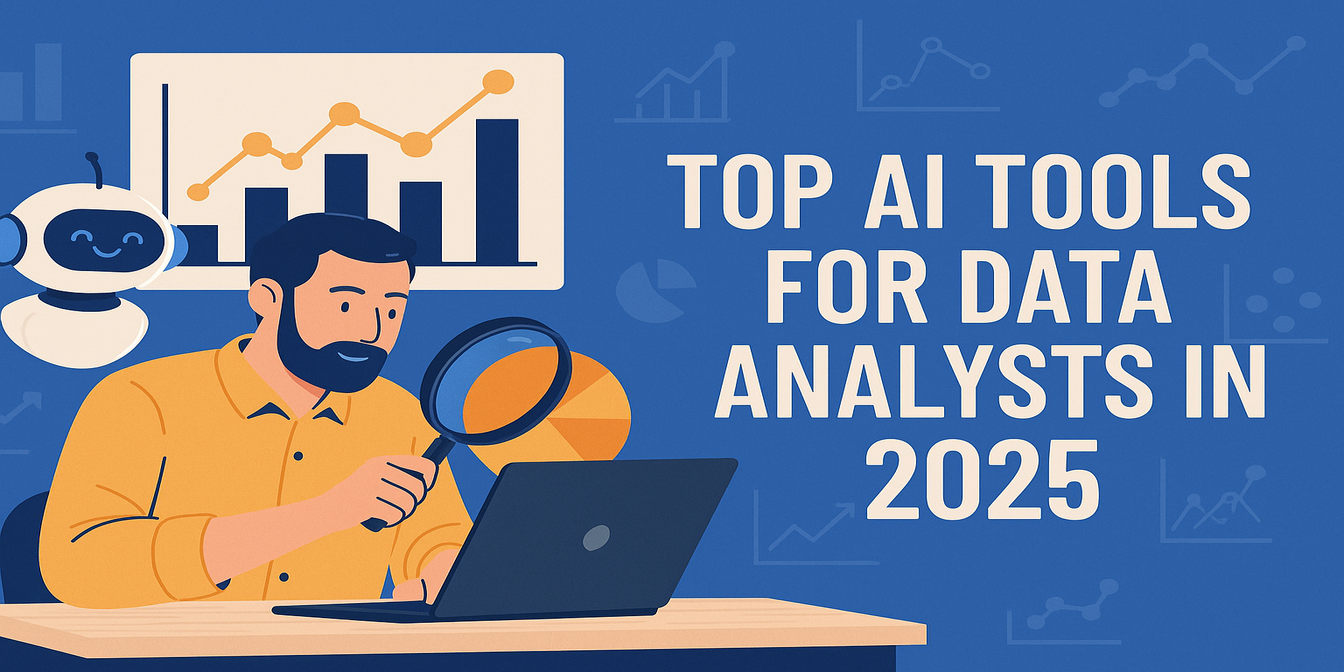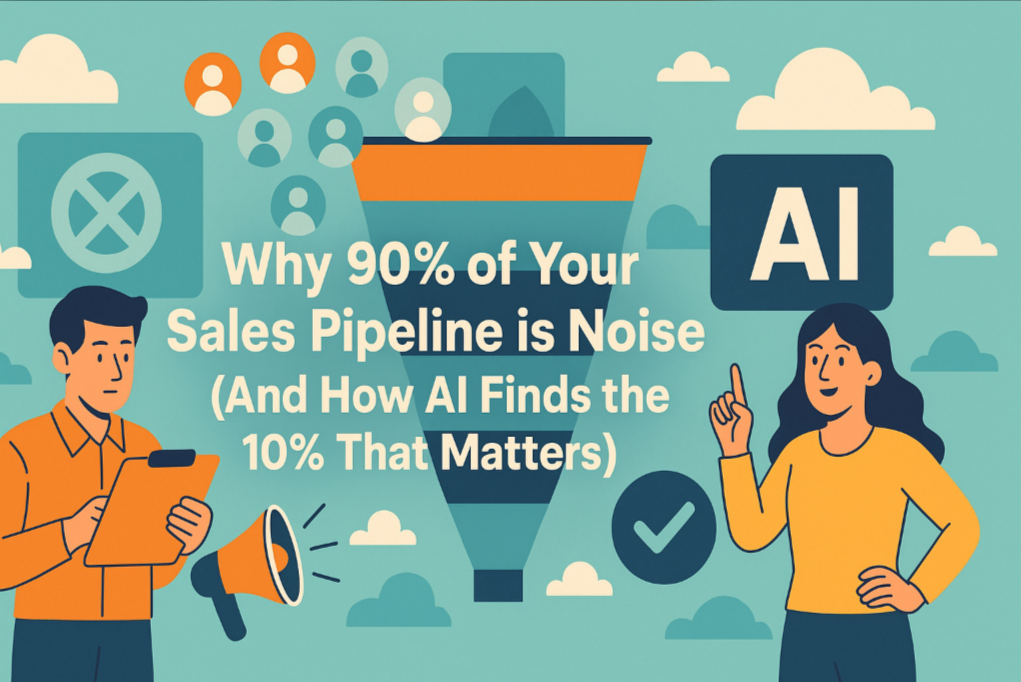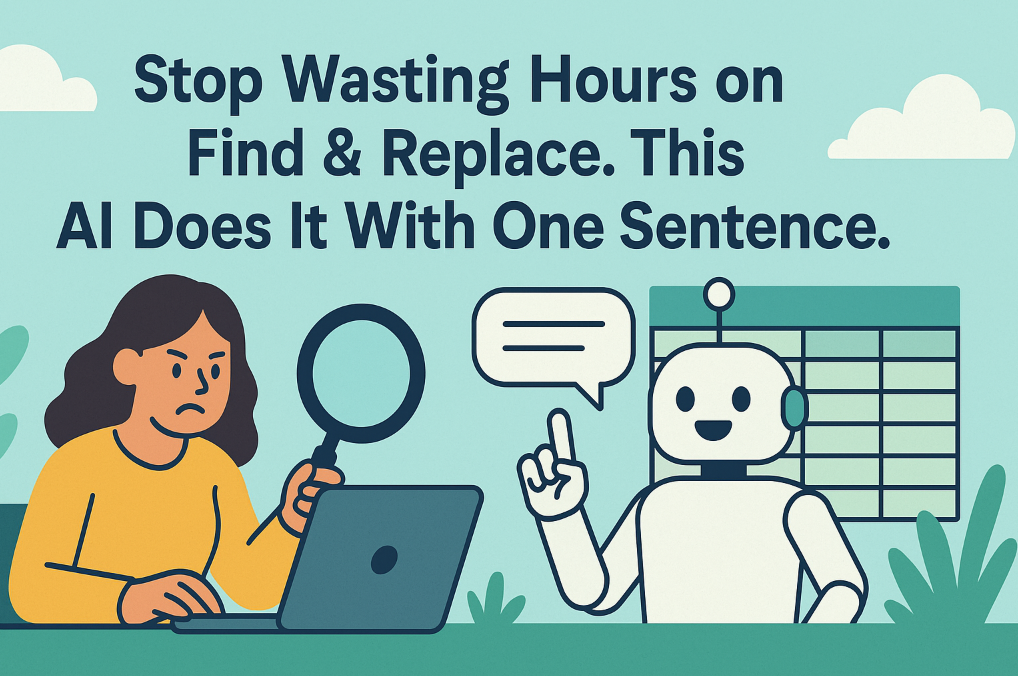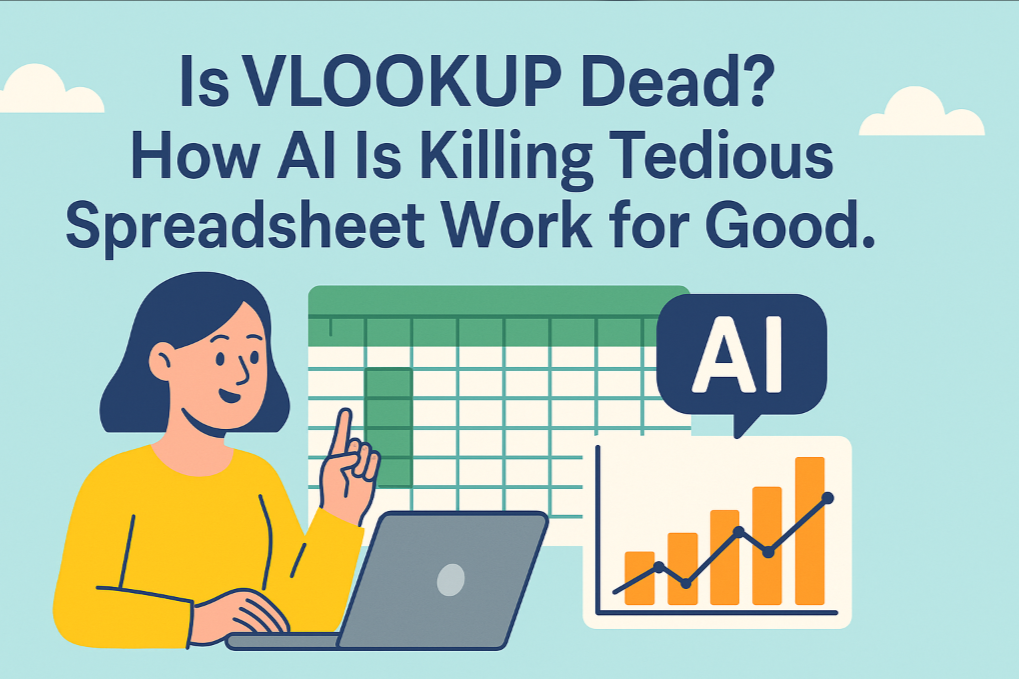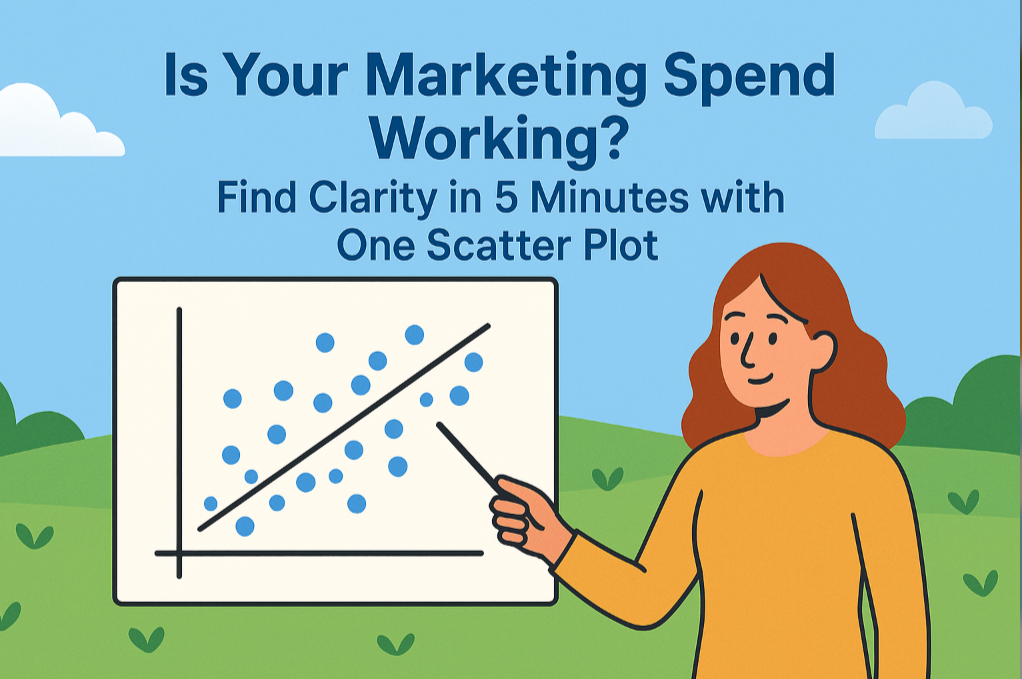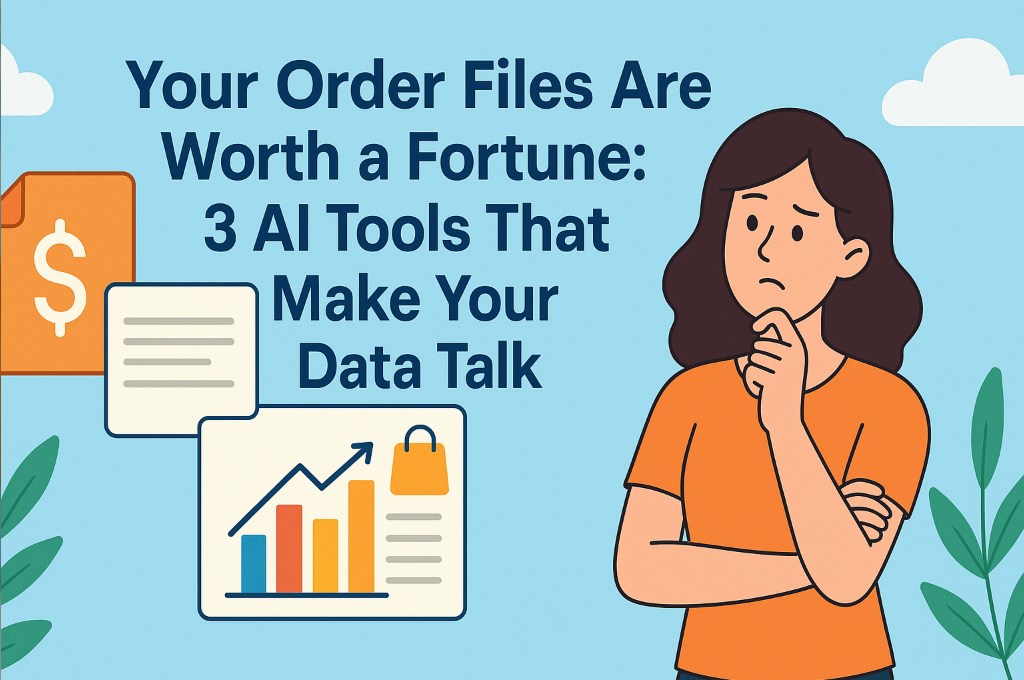Key takeaways:
- Struggling with the classic conflict of high lead volume from Marketing but low conversion rates in Sales? The core issue is an inability to clearly measure the ROI of each channel.
- Stop making budget decisions based on feelings. AI can act as a neutral data analyst, breaking down data silos between marketing and sales to reveal the true value of every channel with hard facts.
- This article demonstrates 3 key questions to ask an AI, provides a step-by-step guide, and shows how to use an AI tool to quickly merge multiple data files, scientifically optimize your marketing budget, and clarify your Ideal Customer Profile (ICP).
This scene is likely playing out in your company right now.
During the annual budget planning meeting, the Head of Marketing presents a detailed proposal, requesting more budget for "social media campaigns" and "sponsoring major industry conferences." The justification: these channels generate significant brand exposure and a high volume of leads.
Before the applause can begin, the Head of Sales raises an objection. "Our frontline team's feedback is that most leads from these channels are just window shoppers. Very few enter the sales process and close. I recommend we allocate more budget to channels that directly generate high-quality opportunities."
The CFO's expression tightens. Looking at both department heads, they ask the one question no one can dodge: "I don't want stories; I want data. Can anyone tell me, for every dollar we spend on Channel A, how much revenue does it bring back? What about Channel B?"
A sudden silence fills the room. The marketing team's lead generation data and the sales team's CRM data exist as two separate islands, separated by a deep, dark sea of attribution.
It's Time to Build a Data Bridge
To answer the CFO's question, you don't need more complicated reports. You need a "business analyst" who can connect those data islands.
Imagine handing your Channel_Sources.csv from marketing and your Closed_Deals.csv from the sales CRM to this analyst. Unswayed by subjective opinions, they would link, calculate, and analyze the data, then produce a clear report:
"Based on a correlated analysis, leads from 'Industry Conferences' have a 3.5% conversion rate with an average deal size of $100,000. Leads from 'Social Media Campaigns' have a 0.2% conversion rate and an average deal size of $8,000. Therefore, while the conference generated fewer leads, its ROI is 20 times higher."
This is precisely the role that AI data analysis tools are designed to play. They act as that neutral, efficient business analyst, helping you build the bridge between your data silos and ensuring every budget decision is backed by evidence.
3 Key Questions AI Can Answer to Make Budgeting Rational
With this "data analyst" at your service, you can ask these decisive questions about your business data at any time.
Question 1: "What is the true ROI of each channel?"
- You can ask the AI: "Combining the lead source and deal data, show the total deal value and customer count grouped by lead source."
- The value you get: It generates an intuitive comparison chart, giving you a clear view of the revenue contribution from different channels. This provides the most direct basis for budget allocation.
Question 2: "Are we winning on lead volume or lead quality?"
- You can ask the AI: "Calculate and compare the lead conversion rate and average deal size for the 'Google Ads' versus 'Trade Show' channels."
- The value you get: The AI provides a definitive numerical answer, quantifying the quality of leads from different sources. This helps your team establish the right Key Performance Indicators (KPIs), shifting focus from "lead volume" to "high-quality lead contribution."
Question 3: "What are the common characteristics of our most valuable customers?"
- You can ask the AI: "Analyze the top 20% of customers by deal value and summarize their common traits in terms of 'industry,' 'company size,' and 'region'."
- The value you get: This is the most scientific way to define your Ideal Customer Profile (ICP). The AI will reveal the specific segments where your high-value customers are concentrated. With this clear profile, your marketing team can execute more precise targeting and improve overall marketing efficiency.
Practical Guide: Find Your "Golden Channel" in 3 Steps with Excelmatic
With the theory clear, let's move to execution.
Step 1: Prepare the Data – Upload Your Marketing and Sales Reports
You'll need two basic data reports:
- A
Lead_Sources.csvfile exported from your marketing analytics tool, containing lead IDs and their source channels. - A
Closed_Deals.xlsxfile exported from your CRM, with customer IDs, deal values, industry, region, etc.
Open Excelmatic and simply drag and drop both files into the upload area. The AI will automatically recognize and prepare them for data blending.
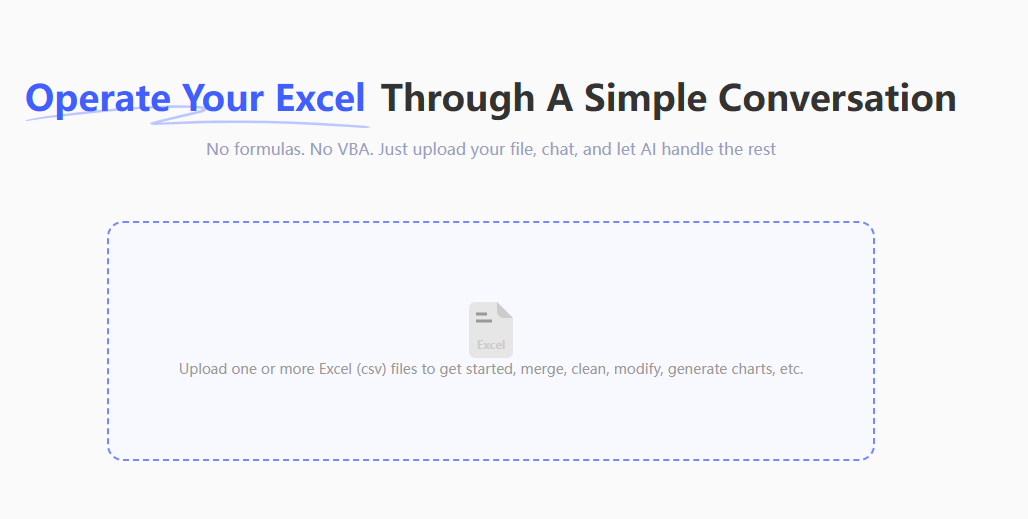
Step 2: Ask the Core Question – Which Channel Is Most Valuable?
In the Excelmatic chat box, type a direct question: Group by lead source, sum up the deal value, and show it as a bar chart.
Excelmatic will instantly generate a bar chart,clearly displaying the revenue contribution of each channel.
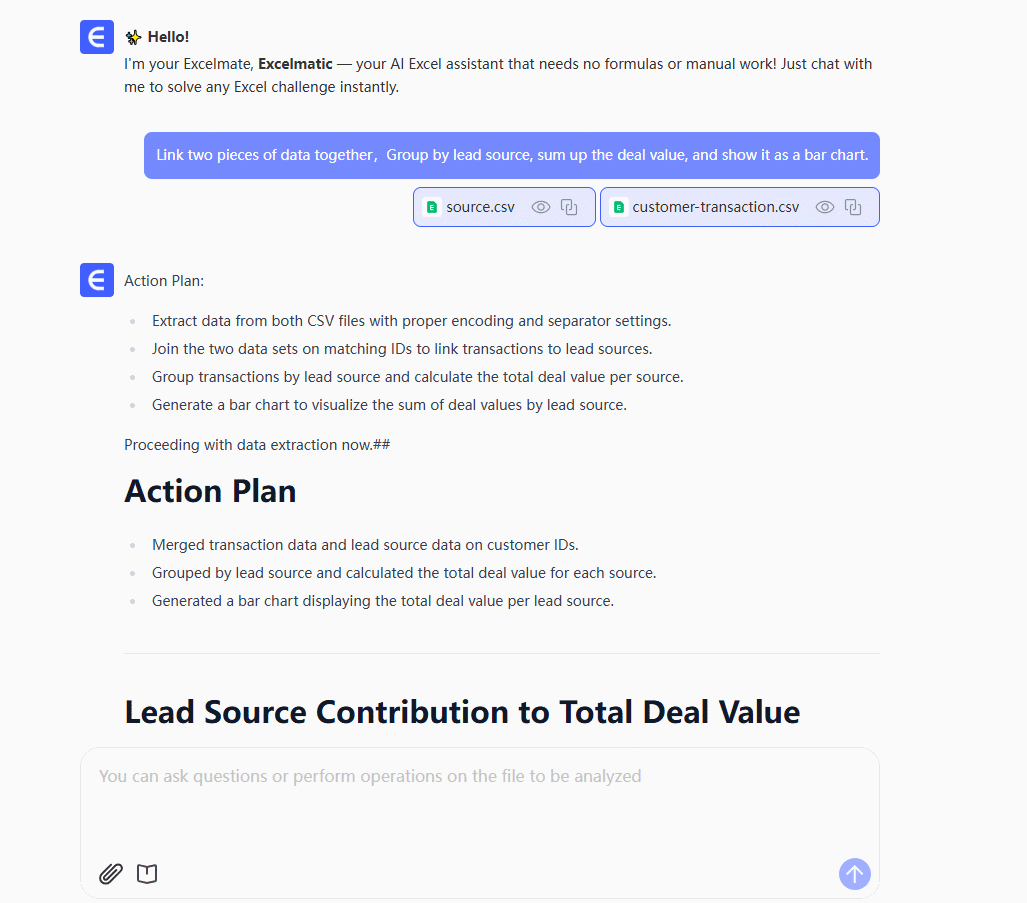
Step 3: Deepen the Analysis – Which Customers Should We Focus On?
After identifying high-value channels, ask a follow-up question to define your customer profile: Find the top 5 customers by deal value and analyze their distribution by "Industry" and "City".
The AI will immediately generate the corresponding chart or list, revealing the common traits of your best customers.
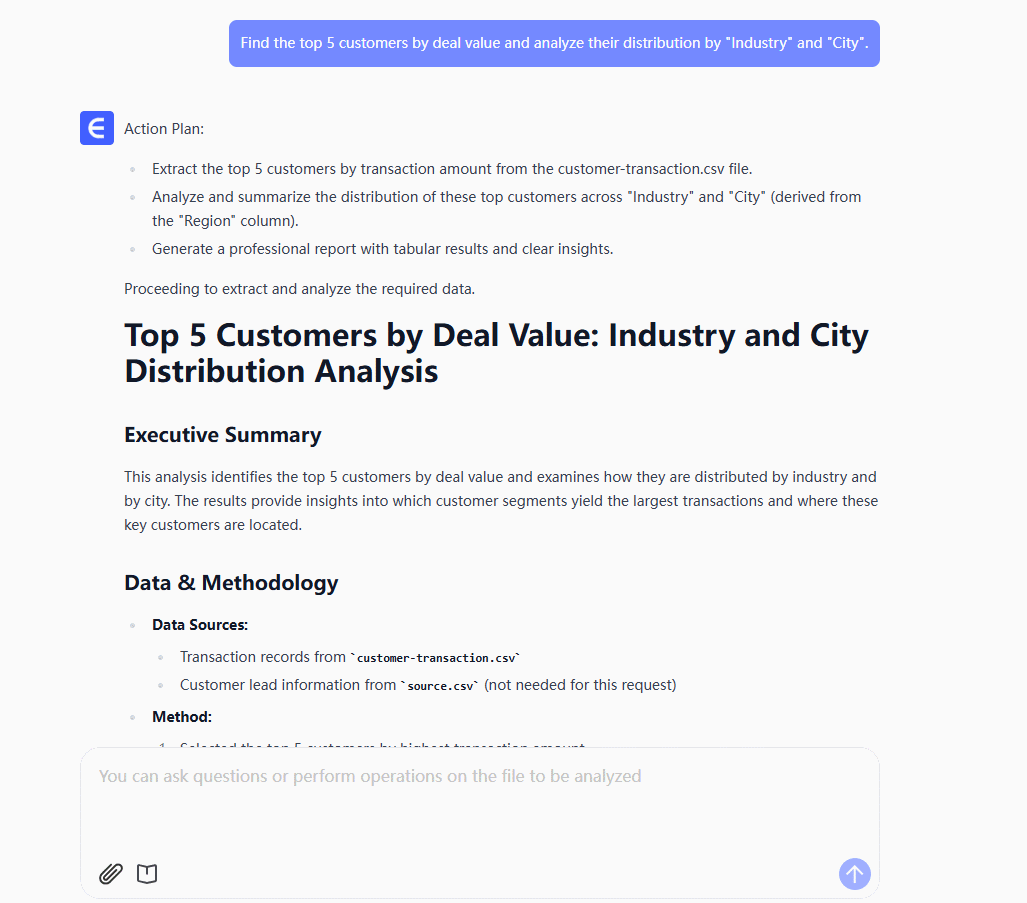
An analysis that used to take days of cross-departmental work can now yield a data-backed conclusion in minutes.
A Comparison of Similar Analysis Tools on the Market
To perform marketing and sales attribution analysis, several types of tools are available:
- HubSpot Marketing Hub: The All-in-One Platform. Its advantage is its comprehensive feature set. When all your business processes are within the HubSpot ecosystem, attribution analysis is relatively seamless. The drawback is its high cost and the fact that it deeply locks you into its ecosystem, limiting flexibility.
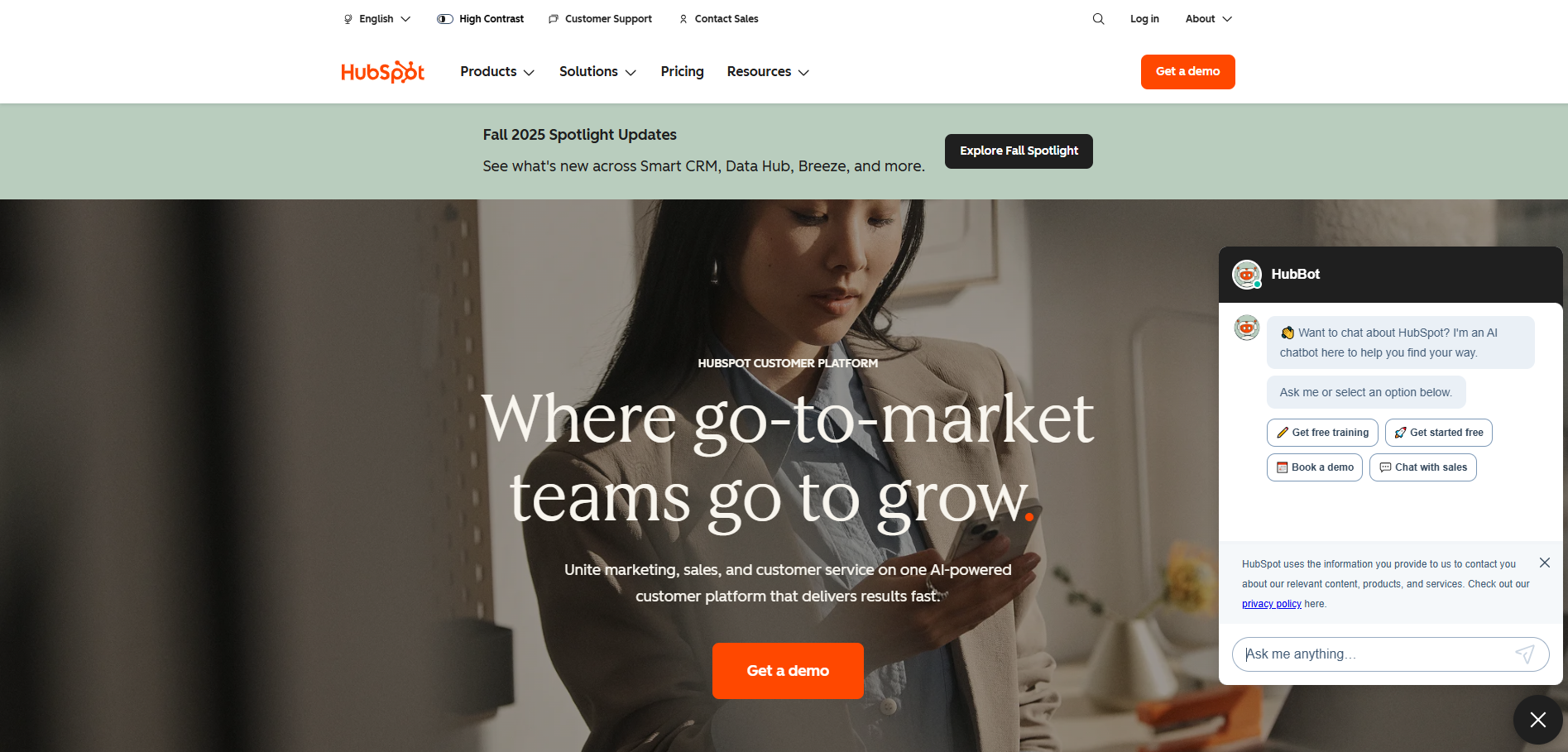
- Tableau: The Professional Business Intelligence (BI) Tool. Its strength lies in its power, meeting the needs of data analysts for deep, complex visualizations. The drawback is a steep learning curve, making it unsuitable for marketing or sales professionals without a data analysis background to use independently.
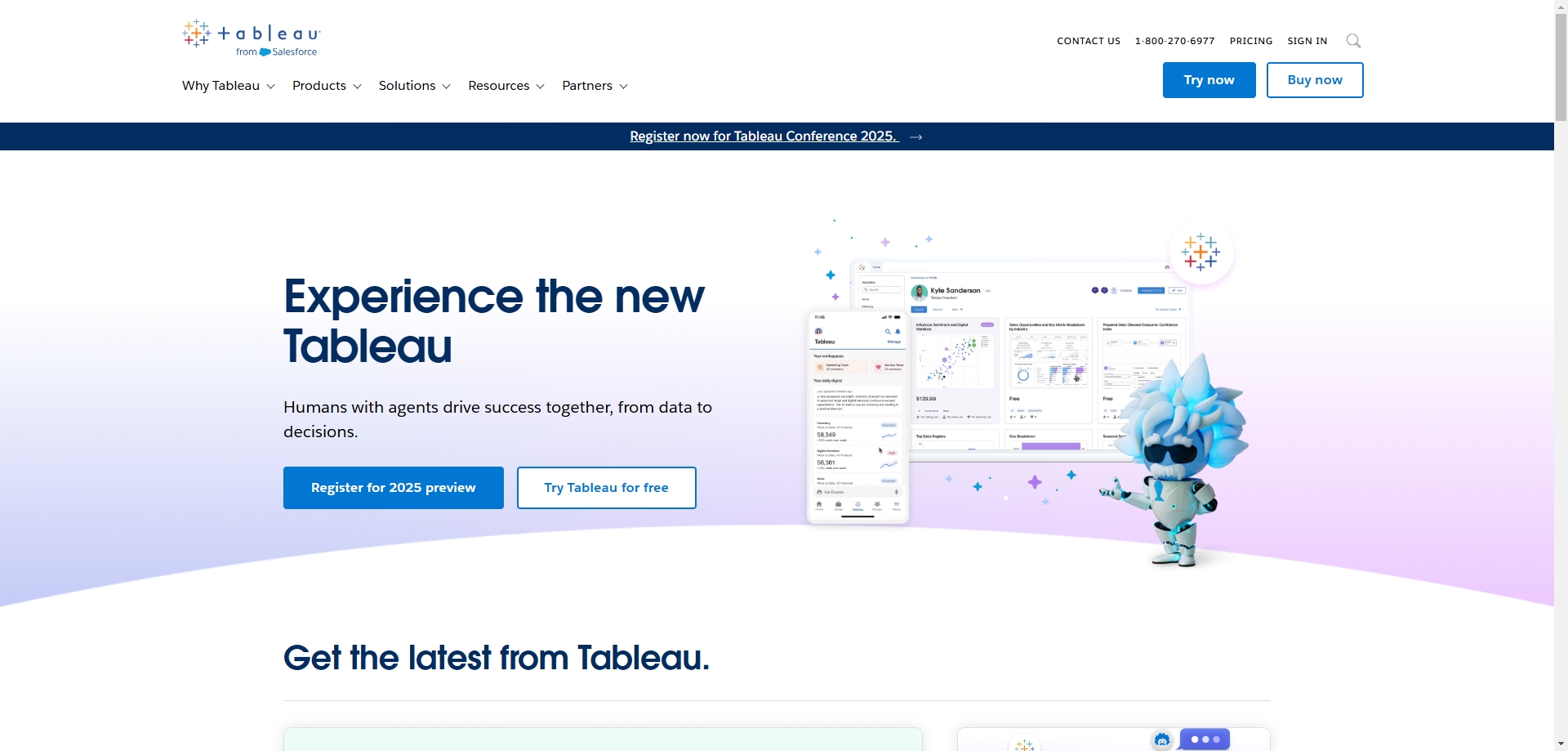
- Excelmatic: The Flexible, No-Code Data Analysis Tool. Its core advantage is its flexibility and ease of use. It doesn't require you to pre-integrate all your systems. As long as you can export Excel or CSV files from different sources, you can immediately start your correlational analysis. It solves the most common need of business users: "I have a few spreadsheets, and I just want to get my answer, quickly and easily."

Frequently Asked Questions (FAQs) About AI Marketing Analysis
1. The column names in my files from different systems don't match. Can the AI handle that? Yes. Excelmatic's data blending feature can intelligently identify and suggest links between related columns in different tables (e.g., "Customer ID" and "Company Number"). You just need to confirm the suggestion to connect your data.
2. Our customer data and marketing strategies are confidential. Is it secure? Security is our highest priority. We use end-to-end encryption and strict data isolation policies to ensure your data is visible only to you.
3. Why not just use Excel's VLOOKUP or PivotTables? For multi-table joins and complex analysis, using VLOOKUP and PivotTables involves tedious manual steps, is prone to errors, and makes flexible, follow-up questions difficult. AI's conversational analysis allows you to ask new questions on the fly, just like talking to a human expert, dramatically improving the efficiency and depth of your analysis.
Making data the "common language" for your marketing and sales teams is the foundation for achieving efficient growth.
Tools like Excelmatic are empowering every business professional who needs to make decisions with the complex capabilities of data analysis.
Start your free trial of Excelmatic today. Upload your marketing and sales data and find the golden channel that will maximize the value of your budget.

